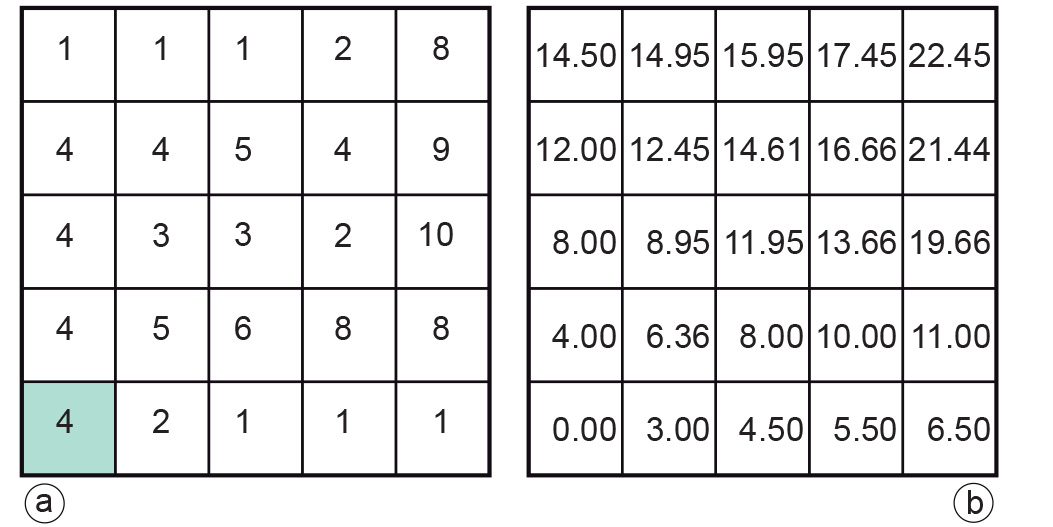Diffusion
Introduction
The determination of the neighbourhood of one or more target locations may depend not only on distance - cases of which we have discussed above - but also on direction and differences in the terrain in different directions. This is typically the case when the target location contains “source material” that spreads over time, referred to as diffusion.
This “source material” may be air, water, soil pollution, commuters exiting a train station, people from an refugee camp that has just been opened up , a natural spring on a hillside, or radio waves emitted from a radio relay station. In all these cases, one will not expect the spread to occur evenly in all directions. There will be local factors that influence the spread, making it easier or more difficult. Many
Explanation
Diffusion computation involves one or more target locations, which in this context are better called source locations: they are the locations of the source of whatever spreads. The computation also involves a local resistance raster , which for each cell provides a value that indicates how difficult it is for the “source material” to pass through that cell. The value in the cell must be normalized, i.e. valid for a standardized length (usually the cell’s width) of spread path. From the source location(s) and the local resistance raster, the
While computing total resistances, the
Examples

The value is found, for each cell, in the raster of Figure b.
For instance, there are three paths from the green source location to its northeast neighbour cell (with local resistance 5). We can define them as path 1 (N–E), path 2 (E–N) and path 3 (NE), using compass directions to define the path from the green cell. For path 1, the total resistance is computed as:
Path 2, in similar style, gives us a total value of 6.5. For path 3, we find:
and, thus, it is obviously the minimal cost path.
Learning outcomes
-
11 - Spatial analysis: classes of functions
Classify and explain spatial analysis functions (measurements, classification, overlay, neighbourhood and connectivity) in a raster and vector environment (level 1 and 2).
Prior knowledge
Self assessment
The reader is asked to verify one or two other values of minimal cost paths that the GIS has produced for the output raster.
Outgoing relations
- Diffusion is a kind of Neighbourhood operations